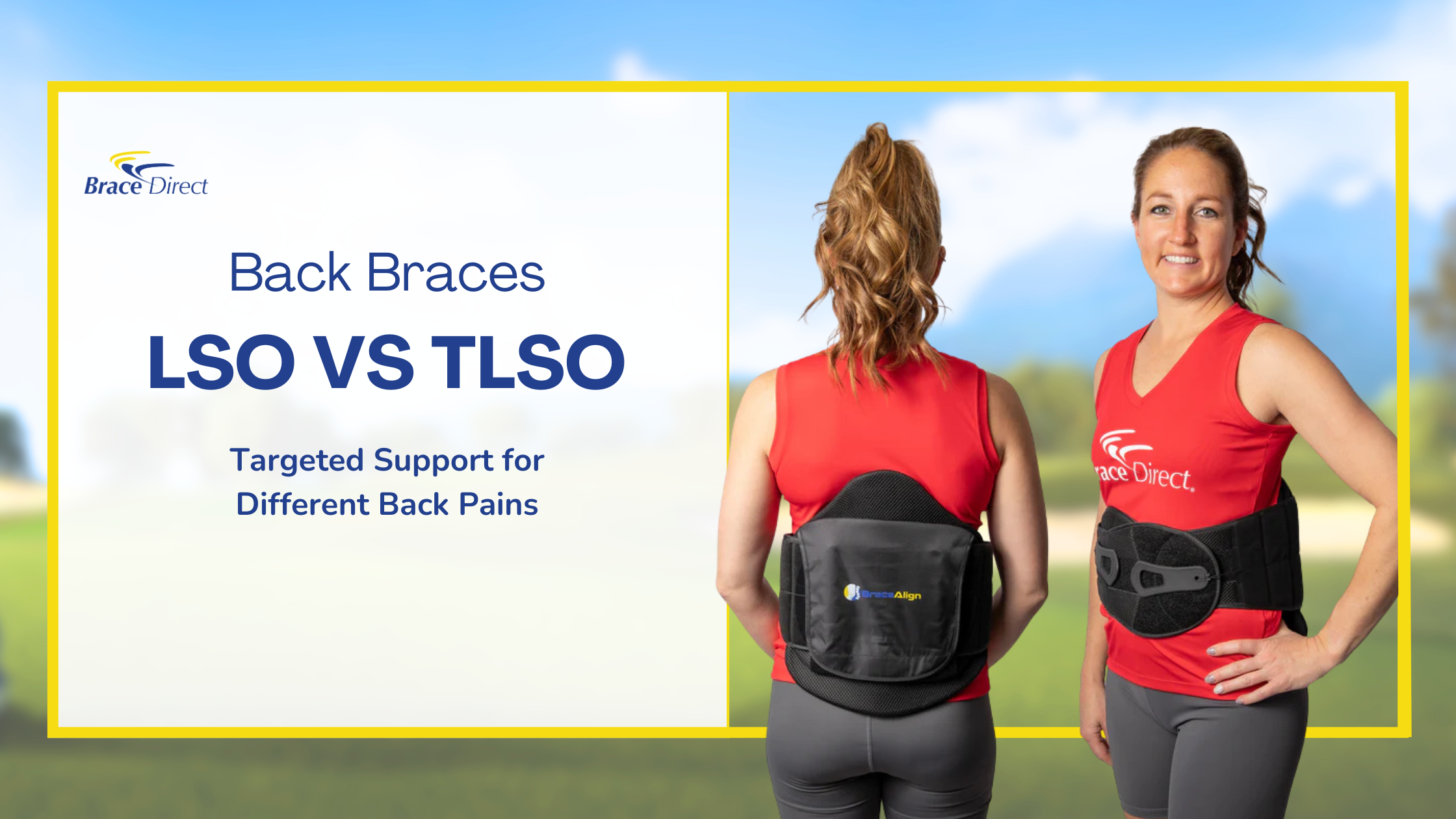M–Th 9a–11p | Fri 9a–5p
Sun 3p–11p EST
M–Th 9a–11p | Fri 9a–5p
Sun 3p–11p EST

Back pain can significantly affect your daily life, but choosing the right support can make all the difference. LSO (Lumbar-Sacral Orthosis) and TLSO (Thoracic-Lumbar-Sacral Orthosis) braces are two highly effective solutions tailored to specific back conditions. In this guide, we’ll help you understand the key differences, how these braces work, and which might be right for your needs.
Whether you’re recovering from surgery, managing chronic pain, or improving posture, this post will provide the insights and recommendations to make an informed decision.
Jump to sections below to learn about LSO Braces, TLSO Braces, and the key differences.
LSO back braces provide targeted support and stability to the lower back. They are an effective solution for individuals dealing with lower back pain, injury, or recovery needs.

This LSO brace provides exceptional lumbar support, promotes proper posture, and is perfect for individuals recovering from surgery or managing chronic lower back conditions. Lightweight and adjustable, it ensures all-day comfort.
Shop NowTLSO back braces provide comprehensive support for the mid and lower back. They are ideal for individuals who need more extensive stabilization for conditions like scoliosis or spinal fractures.

This TLSO brace offers superior support for the thoracic and lumbar spine, ideal for conditions like scoliosis, kyphosis, or thoracic compression fractures. Adjustable for a custom fit, it ensures stability, comfort, and enhanced recovery.
Shop NowChoosing between an LSO and TLSO brace depends on your condition and the area of the spine that needs support. The comparison below highlights the key differences to help you make an informed decision.
| Feature | LSO | TLSO |
|---|---|---|
| Target Area | Lower back (L1 to sacrum) | Mid and lower back (T6 to sacrum) |
| Conditions Treated | - Herniated discs - Degenerative disc disease - Lower back sprains/strains - Post-surgical stabilization |
- Scoliosis - Thoracic compression fractures - Kyphosis - Post-surgical stabilization (thoracic spine) |
| Level of Support | Moderate to high | High (more restrictive) |
| Mobility Impact | Allows greater flexibility for lower back movements | Restricts movement in the thoracic and lumbar regions |
| Best For | Chronic lower back pain, surgery recovery, mobility enhancement | Scoliosis, spinal fractures, extensive spinal support |
The Brace Direct team can help you find the perfect brace to manage your pain. Contact us for personalized recommendations or help with measuring or fitting.
Schedule a Free Consultation
An LSO (Lumbar Sacral Orthosis) back brace supports the lower back and sacral area, primarily addressing issues in the lumbar spine. A TLSO (Thoraco-Lumbar Sacral Orthosis) brace provides support from the thoracic (mid-back) to the sacral region, offering a broader range of support for conditions affecting both the mid and lower back.
Back Braces: LSO vs TLSO - Targeted Support for Different Back Pains
All of our back braces are FSA/HSA eligible, making it simple and convenient to use those funds for your purchase. Additionally, braces with a PDAC code (e.g., L0450) may qualify for coverage under Medicare or other insurance plans. At Brace Direct, we choose not to bill insurance companies directly, allowing us to keep our prices lower and provide a more straightforward purchasing experience. Dealing with insurance providers can often be a frustrating and time-consuming process, involving claims, denials, and delays. Many customers also find that insurance copays for the same brace are significantly higher than purchasing it outright from us. By buying directly through Brace Direct, you not only avoid these hassles but also enjoy substantial savings and a seamless shopping experience.